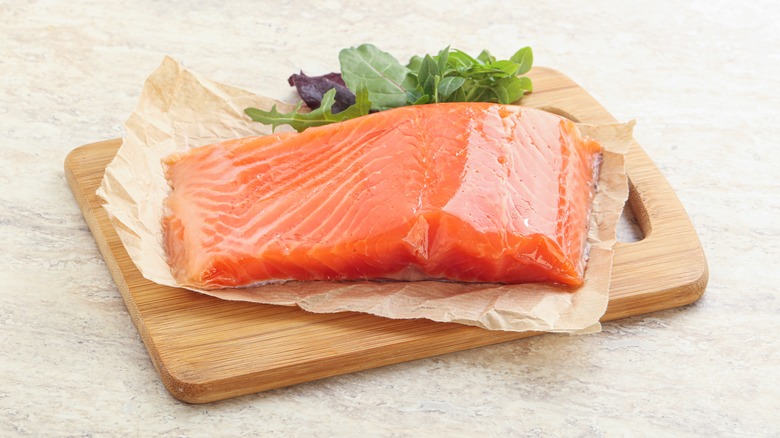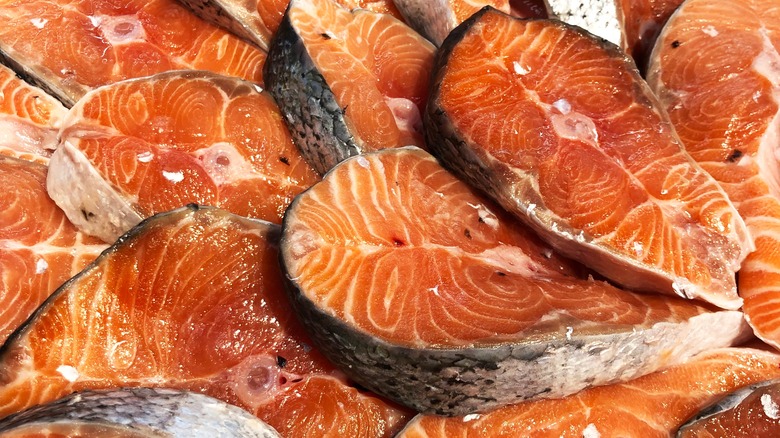The Colorful Farmed Salmon Myth You Should Stop Believing
Even if you don't normally like fish, it's hard to ignore how delicious a flaky, buttery salmon filet can be. Not only is salmon tasty, but its mild flavor makes it a versatile protein, and it can work in everything from this Korean-Style Air Fryer Salmon recipe to this Cajun Grilled Salmon recipe. While we eat around 4.5 billion pounds of seafood every year, according to Oceanbox, salmon is the second-most common type of seafood in the U.S.
But although we love to eat salmon, we may not fully understand how to properly buy and cook it. For instance, a general rule of thumb is that salmon is done cooking when the inside easily flakes with a fork; However, that's a salmon myth. In actuality, the tail may turn out flaky while the thicker end still isn't fully cooked. So, it's best to make sure the whole filet has reached an internal temperature of 145 degrees Fahrenheit with a thermometer. Another misconception, according to the Aquaculture Stewardship Council, is that farmed salmon is unhealthy and full of antibiotics. As the council explained, many salmon farms don't use antibiotics and studies show that farmed salmon contains plenty of nutrients and Omega-3 fatty acids.
Many people also judge the quality of a salmon filet based on its color, but this is yet another assumption that isn't necessarily based in facts.
Pink salmon isn't always wild-caught
You may associate a fresh, wild-caught piece of salmon with a pink (or orange-pink) hue that is caused by the salmon's diet of shrimp and krill, which contain a red-orange chemical called astaxanthin (via Quartz). Farmed salmon, on the other hand, would be gray if farmers didn't feed them astaxanthin, as they're usually given a diet of kibble containing ground-up feathers, chicken fat, and a few other unsavory-sounding ingredients.
But salmon farmers are highly motivated to turn their salmon pink. According to Time, a study showed that people will pay up to $1 more per pound for pigmented salmon, as the colorful fish is reminiscent of the days when salmon was eaten by the wealthy. The salmon-color association is strong: If you've ever bought a salmon-colored piece of clothing, for example, you've experienced it yourself.
To satisfy consumers and sell their salmon, farmers feed their fish natural or synthesized astaxanthin, which they're required to label as added coloring, Quartz shares. However, while the color of your farm-raised salmon may not be natural, it doesn't automatically mean it's bad for you. Food coloring is commonplace in a multitude of food products, the Aquaculture Stewardship Council points out, and Time notes that astaxanthin is sold in health food stores as an antioxidant pill. So while you shouldn't only pay attention to color when buying salmon, you don't necessarily need to abandon farm-raised salmon altogether.

